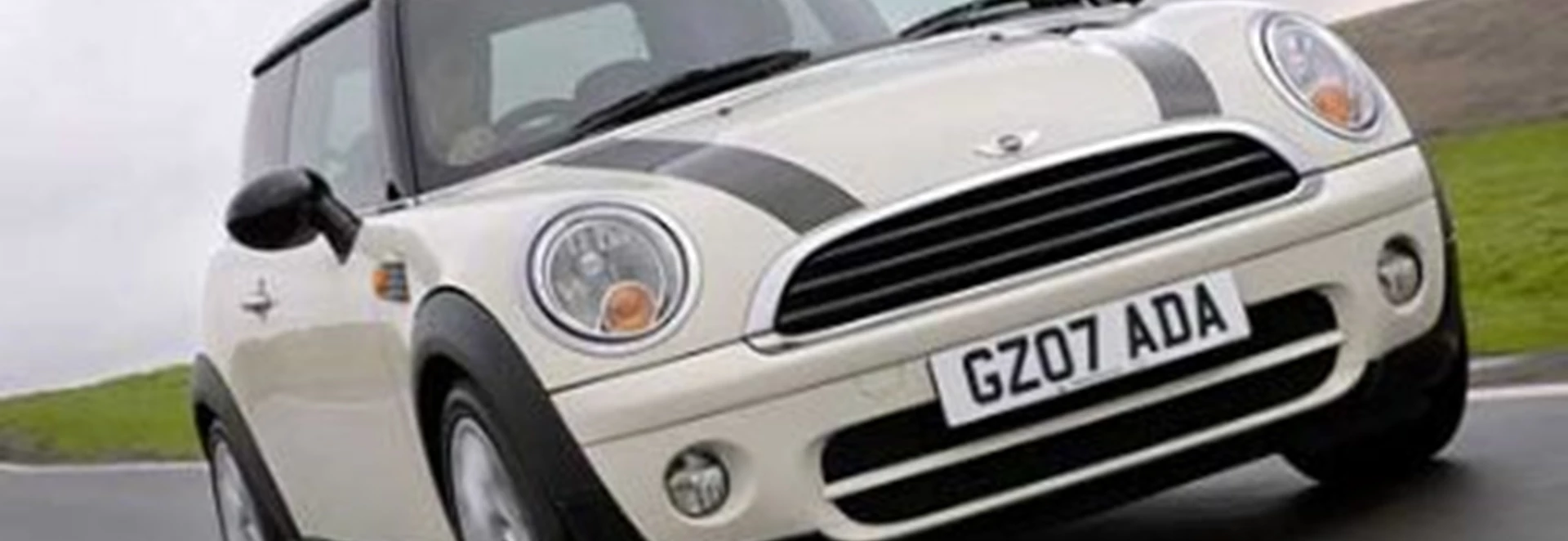While realising that the challenge of a 48-hours turn-around was essential to creating a feature story on the latest Mini E (the company's innovative electric product), it was also decided that a more eco-friendly trip should be attempted from my Lincoln home to Bavaria, as opposed to hopping onto a German-bound jet at Heathrow.Therefore, I found myself at the wheel of the latest specification Mini Cooper D, determined as much to establish that the car would make moderate progress, as I was to prove its eco-credentials.Departing Lincoln at 4.15am, on a Tuesday, my navigator (photographer) and I reached the Ferry Port of Dover on time to catch the 7.45am, 90-minute P&O crossing to Calais, remembering to alter our watches to one hour ahead for European Time. Despite a slight reduction in headroom thanks to my test Cooper D being equipped with the twin glass sunroof option, the Mini remains an excellent driving package for two people. Our arrival time at Calais was bang on 10.15ET, in glorious winter sunshine.Driving north from France towards Belgium, a brief shopping stop was called for at Adenkirke, knowing that we would be too late on the return trip. Our journey continued at midday, past Brussels to a snow-blanketed Aachen (Holland), into Germany (near Cologne) to make our tally of five countries by mid-afternoon a reality. Naturally, Germany is a large country but it is still peppered with several non-restricted autobahns, where the full extent of the Mini Cooper D's performance could be exploited.In fact, the compact hatchback, which is renowned for its agility, occasional suspension crashing over poor road surfaces (a head-jarring, several times occurrence in Belgium) and respectable turn of speed, was soon cruising at a comfortable 90-100mph, while returning a still outstanding 47.0mpg from its diesel engine.Last year, BMW (Mini's owner) took advantage of its relationship with the French PSA Group to install both its petrol and diesel units beneath the clamshell bonnets of its cars. That in the Cooper D is the same, excellent 110bhp unit that powers the Peugeot 207 1.6HDi and is, thus, not disadvantaged in any way.Interestingly, apart from the very slowest of overtaking trucks on the two-lane stretches of German motorway, I scarcely needed to shift out of 6th gear for most of that country's roads, so good is the rate of progress. The torque delivery (177lbs ft) of the 1.6-litre capacity unit is so strong from little more than 1,200rpm that downshifts were unnecessary.Travelling at 100mph equates to a little less than 3,000rpm, which means that refinement is not an issue. I did witness a maximum of 132mph (indicated) on a few occasions, yet the engine never felt less than willing and the economy figure did not drop below 45mpg (against a government figure of 72.4mpg Official Combined cycle).When you consider that the unit emits 104g/km of CO2 from its tailpipe, which equates to Band B and a £35 VED charge, our transport is not merely one of the lowest running-cost motorcars sold in the UK but is also among that class of low-CO2 runners that have become exceedingly popular, especially during the current economic downturn. Perhaps astonishingly, despite the sub-zero temperatures, not even a severe snowfall, in the hilly Eifel Region, had much impact on our progress and we reached Munich in the south of the country by 21.00ET and located our hotel.Yet, an interesting facet lies in the use of tyres across Europe. While our Mini slithered and felt slightly edgy on some snow-covered roads, some ordinarily less stable motorcars seemed to breeze past us without problems. Thanks to a somewhat different mind-set, our European cousins think 'Winter' at this time of the year and replace their summer-time alloy wheels with a set of alternative (usually) steel rims clad with Winter-specification tyres.Although looking broadly similar to summer covers, a change of rubber compound and self-cleaning treads (they eject any build-up of snow/ice in the blocks) means that they are better suited to wintry weather and there are far less issues blighting progress, as tends to happen in the UK, with our usual 'first' snowfall of the year that grinds the nation's roads into gridlock. We ought to think similarly in many ways.After testing the Mini E, the return journey proved equally uneventful, although torrential rain accompanied it for almost 450 miles across Europe. The economy figure crept up to 48.9mpg, as a measure of our slower and more safety conscious progress. However, despite departing Munich at around 14.30ET, we still reached Calais at 23.00ET, with a short wait for a rough weather delayed P&O ferry crossing to Dover.The Mini Cooper D never missed a beat. Its wipers cleared immense quantities of water from its screens front and rear and its 17-inch 45-profile tyres gave no cause for lost grip concerns at most stage of the trip. Despite its premium-economy leanings, the Mini provides outstanding performance (0-60mph in 9.2 seconds) and the aforementioned top speed and frugality figures, none of which I believe are anything less than respectable and we re-emerged from the car, 1,860 miles later, back in Lincolnshire, tired but impressed, at 4.00am on the Thursday. MINI Cooper MILESTONESModel tested: MINI Cooper D (Chilli Pack)Body-styles: 3-door hatchbackEngines: 1.6 (TD4)Trim grades: ChilliTop speed: 132mph, acceleration 0-60mph 9.2 secondsEconomy: 72.4mph, actual during test drive 48.9mpgEmissions: CO2 104g/km, VED £35Prices: £16,200 (plus extras)In the showroom: nowWarranty: Three years, 60,000 milesWebsite: www.mini.co.uk




